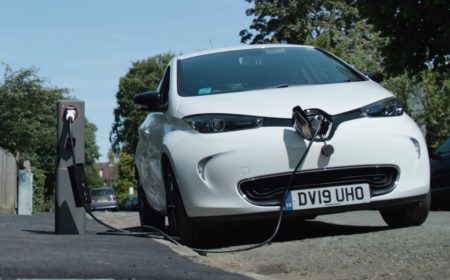We’re on the cusp of transitioning to electric vehicles—if Biden and Congress take the right steps.
Joe Biden’s father sold used cars, steeping the future president in the world of combustion engines. The younger Biden washed vehicles on weekends, borrowed a Chrysler off the lot to drive to the prom, and hit automobile auctions to help stock his dad’s dealership. President Biden still owns the green ’67 Corvette his father gave him as a wedding gift, which he told Car and Driver magazine has “a rear-axle ratio that really gets up and goes.”
But if the White House’s resident motorhead gets his way—and that remains a big “if”—we may one day look back on the Biden presidency as the beginning of the end for gasoline-powered cars and trucks in the United States.
Biden is proposing sweeping reforms to the nation’s energy system to tackle climate change. But they aren’t just aimed at greening the electric grid or driving the nation away from coal and natural gas. Transportation accounts for more than a quarter of U.S. greenhouse gas emissions; it’s proven particularly thorny to figure out how to reduce that, given the number of vehicles on the roads. So, Biden is pitching a host of ways to steer the country toward electric vehicles, or EVs.
By nearly every measure, the popularity of EVs and hybrid vehicles is already surging. Yet despite an avalanche of promising news, the shift away from gas-fueled cars remains stubbornly marginal, compared with the scale of the problem, even as global temperature records driven by fossil fuel use are broken year after year. Clean vehicles still account for just 2 percent of cars sold in the United States, 5 percent in China, and 10 percent in Europe—and those are the world’s biggest markets.
“This transition is by no means inevitable,” says Nic Lutsey, with the International Council on Clean Transportation, an independent research outfit that works with policymakers around the world.
Yet analysts, environmentalists, clean-tech experts, and auto industry-backed researchers all say the right mix of regulation, consumer incentives, and research support might just be enough to spur dramatic acceleration. And thus far, these experts agree, Biden seems intent on pulling the right levers.
“The dam is breaking; the tipping point is here,” says Sam Ricketts, a member of the team that authored Washington Governor Jay Inslee’s climate action plan during his presidential run. Many of Inslee’s ideas have since found their way into Biden’s plans. “The question is how fast can the auto industry go,” Ricketts says, “and can it be fast enough to confront the climate crisis?”
That will depend in no small part on what happens next in Washington, D.C.—and whether Biden and the Democrats, who hold the White House and a razor-thin majority in Congress, can even get the pieces into place.
So close, yet so far
Vehicles powered by electricity have been around since the auto industry’s inception—several of the first 19th-century cars were powered by electrons. But their real promise wasn’t apparent until Toyota began globally mass-producing the Prius hybrid 20 years ago. Less than a decade later, Tesla introduced the Roadster, its all-electric sports car, and got a $465 million Department of Energy loan, jump-starting production of its all-electric sedans. The loan has since been repaid, and Tesla is currently worth seven times as much as General Motors.
Today, the trend is impossible to miss. Just since 2016 EVs and hybrid sales have nearly doubled in North America, and in 2018, for the first time ever, sales rose even as gas prices collapsed. Last year, with an economy wracked by COVID-19, electric or partly-electric vehicle purchases rose almost 5 percent over 2019 as auto sales overall declined by 15 percent.
Read more: National Geographic
It’s Time to Go Green!
If you would like to know more about Solar Panels and the PowerBanx range of home battery systems, and get a free instant quote, please complete our online form:


